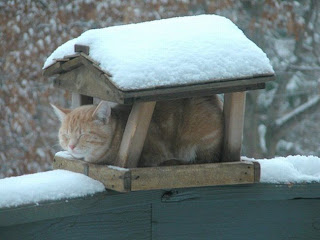I’m
sure you’ve all heard that Antifreeze is BAD for pets. Ethylene Glycol is the ingredient in
antifreeze that will hurt or kill your pets.
What many people don’t know is that this ingredient is not just found in
antifreeze. It is also found in brake
fluid, condensers, heat exchangers, home solar units, and in the bases of
portable basketball goals. It is also
used to winterize toilets in RV’s and summer homes.
It
is the sweet taste and smell that attracts animals and children. Because it is rapidly absorbed it is hard to
treat. Symptoms are harder to detect in
animals, but here is what to look for:
-
Neurologic, in the form of “drunk behavior” from the effects of the alcohol
- Cardiopulmonary, as the result of severe acidosis and electrolyte disturbances
- Renal, due to renal tubular injury from calcium oxalate crystals
Here are some other symptoms to look for:
-
Drunken behavior
- Euphoria/Delirium
- Wobbly, uncoordinated movement
- Nausea/Vomiting
- Excessive urination
- Diarrhea
- Rapid heart beat
- Depression
- Weakness
- Seizures/Convulsions/Shaking tremors
- Fainting
- Coma
What
should you do if you suspect your pet has been poisoned by antifreeze?
If
you notice any of these symptoms the first thing you should do is rush your pet
to the vet. Treatment needs to be
started as soon as possible to be effective.
The earlier treatment is started the greater the chance of survival.
From
the research I have done, antidotes for Ethylene Glycol poisoning are Ethanol
and Fomepizole. I just read this article
where a black lab puppy was saved when the vet gave her Vodka over a period
of time. The vet said Ethanol is better,
but the vodka worked in a pinch.
I’ve
read several conflicting suggestions for inducing vomiting. Some say you should and some say you should
not. Ethylene Glycol is absorbed very
quickly into the body unless vomiting is induced in the first hour, it is not
really beneficial. Fast response is key for
treatment of antifreeze poisoning. The
first two hours are critical. This article gives some
really good information on antifreeze poisoning. I highly recommend reading it.
The
best thing you can do to prevent antifreeze poisoning is to keep your pet away
from any potential danger. Keep
antifreeze containers sealed and away from any areas your pet may be. Keep your pet on a leash when walking it and
don’t let it drink from any puddles. Use
alternative antifreeze that does not contain Ethylene Glycol.
If
you notice an antifreeze leak in your car, repair it as soon as possible and
wash down your driveway. Look at your
driveway after visitors leave to make sure their vehicles were not
leaking. You may be thinking “my pet is
never in the driveway”. Well…one of your
neighbors pets might be or your pet may get loose. Stuff happens and it only takes one small
incident to become a disaster.
The
good news is that many states are now requiring manufactures of antifreeze in
the United States to begin adding a bittering agent to detour animals from
tasting it. This is very important
because as many as 90,000 pets die annually from antifreeze poisoning.
I
hope this never happens to any of my readers, but when I saw the news about
manufacturers adding a bittering agent my heart jumped for joy. Hopefully this will save many pets lives.
Be
Well & Be Happy,
Pet~Pourri






















